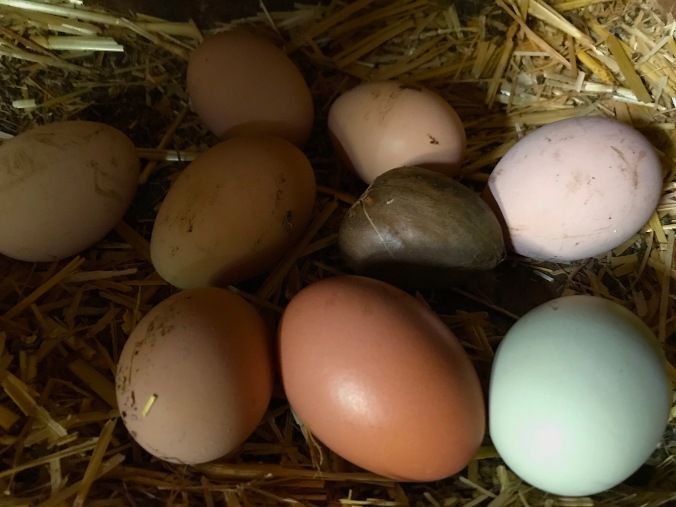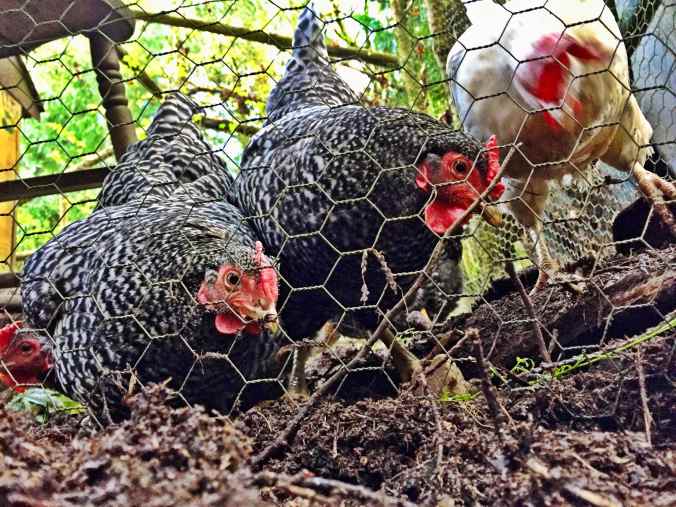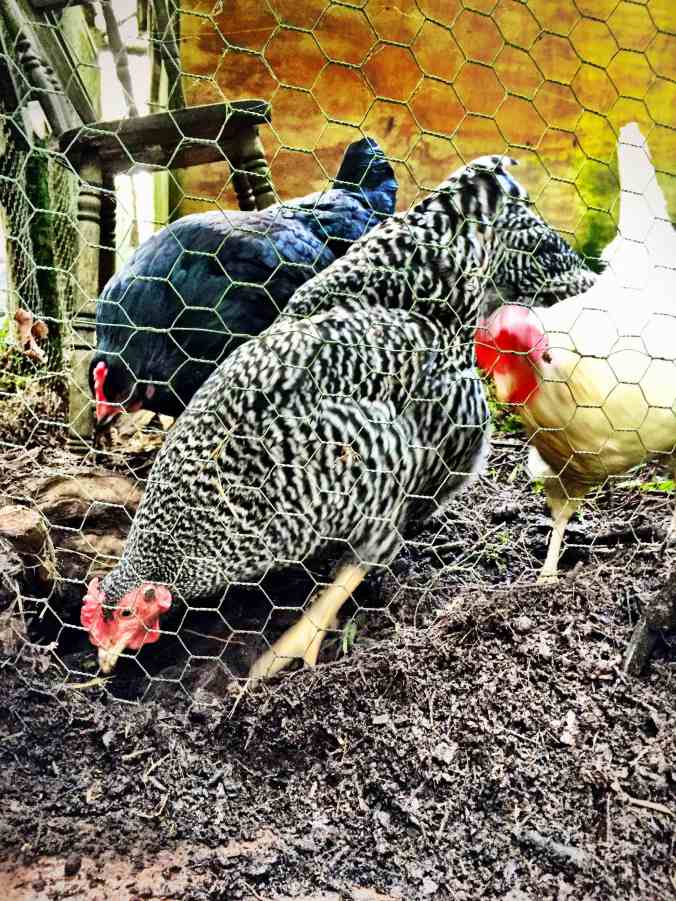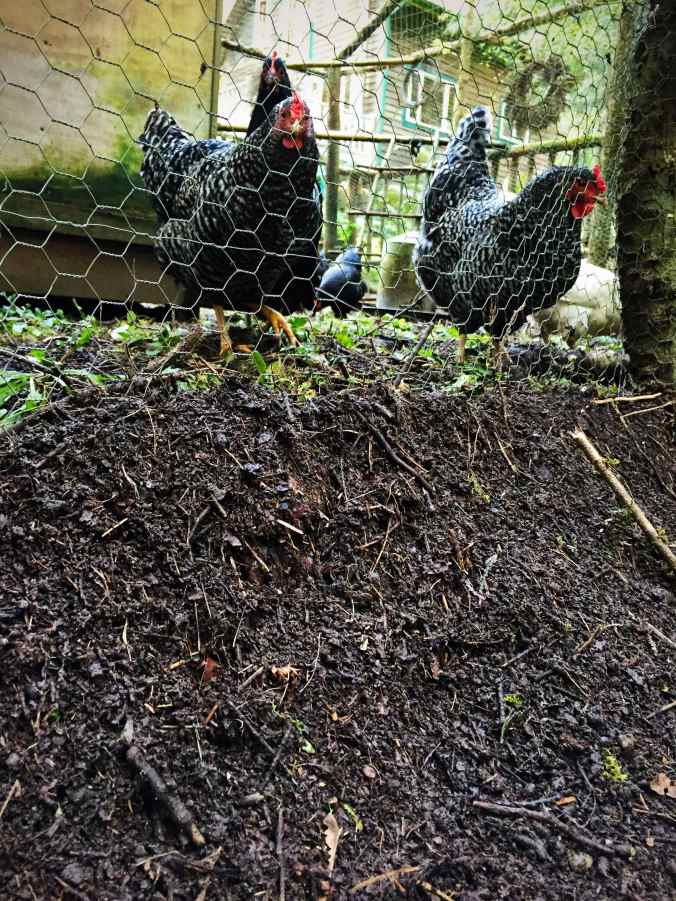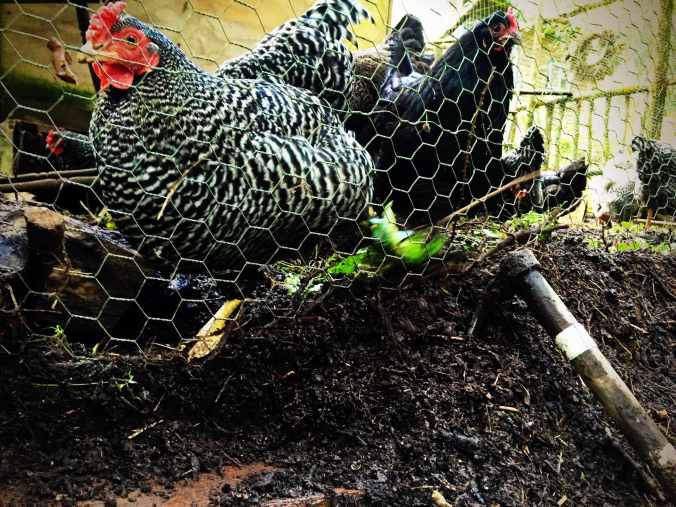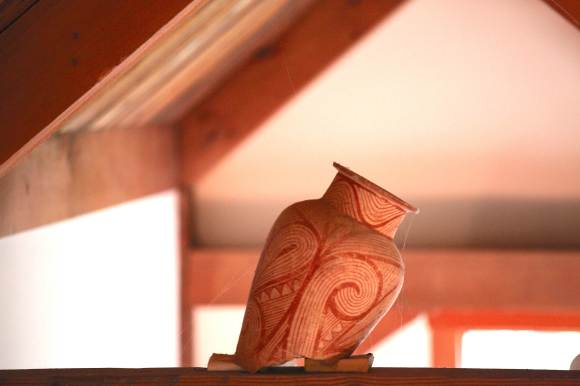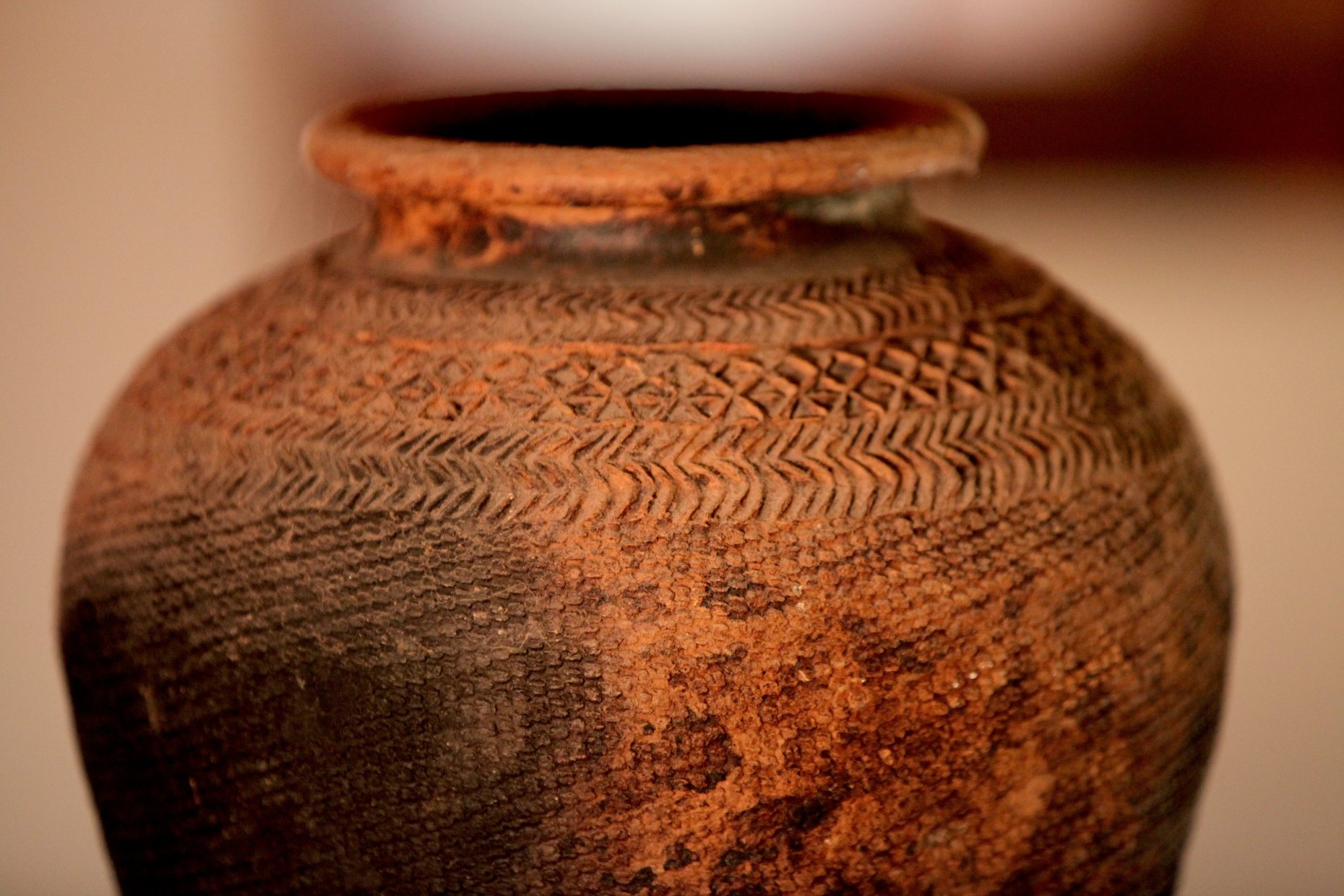
I have a thing about earthen hand-made ceramics. They’re beguiling. Especially the ones made before the (pottery) wheel, with their human thumb-prints inside a perfect sphere. I’ve been collecting them, along with wheel-thrown pots from exotic locales, for years.

But more recently, we’ve had some losses with this highly impermanent material. I fully understand why ancient people found ceramics of such use. They were sustainable, made from a renewable resource — the clays of our Earth. So, when one broke or became worn, it wasn’t a big deal. You could always get another.

But the really old pots, today, are either well-loved or have value. Here’s our story:
It was a dark and stormy night. The wind moaned through the windows, but then a bang happend inside the house that caused us to shudder in our beds. It wasn’t from the tree-branch-driven tumult outside, but from some lurking creature on the inside.
Within seconds the gig was up when we heard a “meow” and I knew our furball had done some terrible deed.
True to her mischievous ways, Willa had knocked a very old pot from one of our ceiling beams. It was a pot that I had brought back from Thailand when I was in my twenties. It was made in Burma and the patterns on it were stunning. Its twin still sits up on a beam, surely tempting our vixen.

Why do I have old clay pots on our beams? Their earthy colors and feminine curves feel like a good combination with the hand-hewn beams from first-growth douglas fir recycled from Seattle’s oldest piers. With children and pets in this house, the 35-foot-high beams were the only place I could think to store the fragile pots out of the way of balls, feet, tails, claws, spills. Who knew that the cat could get up so high and push a pot from its perch?
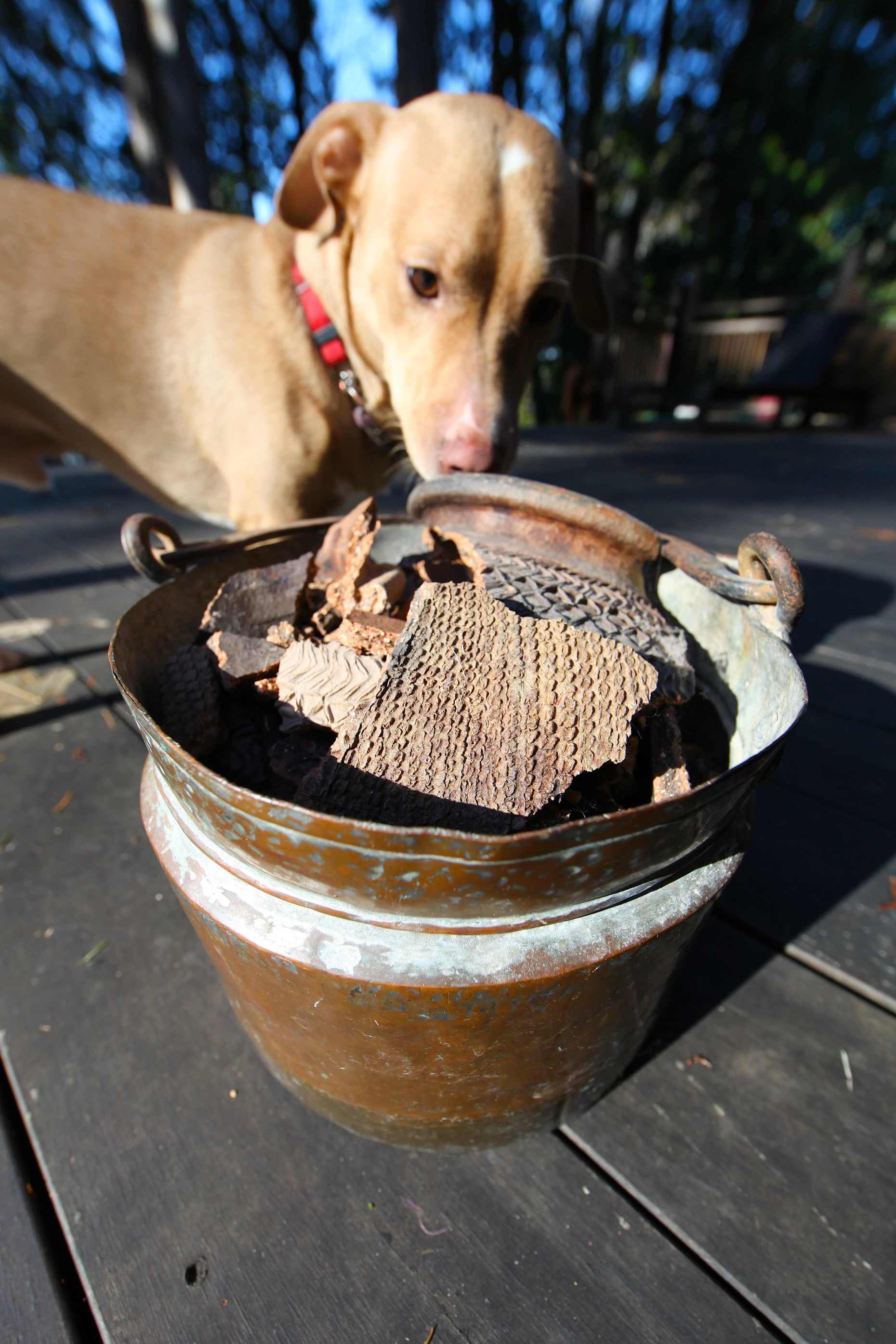
Then, a week later, Willa the cat jumped onto a terra cotta elephant we had brought back from Nepal. This lovely strawberry planter was outside on our deck and somehow she managed to smash it to pieces.
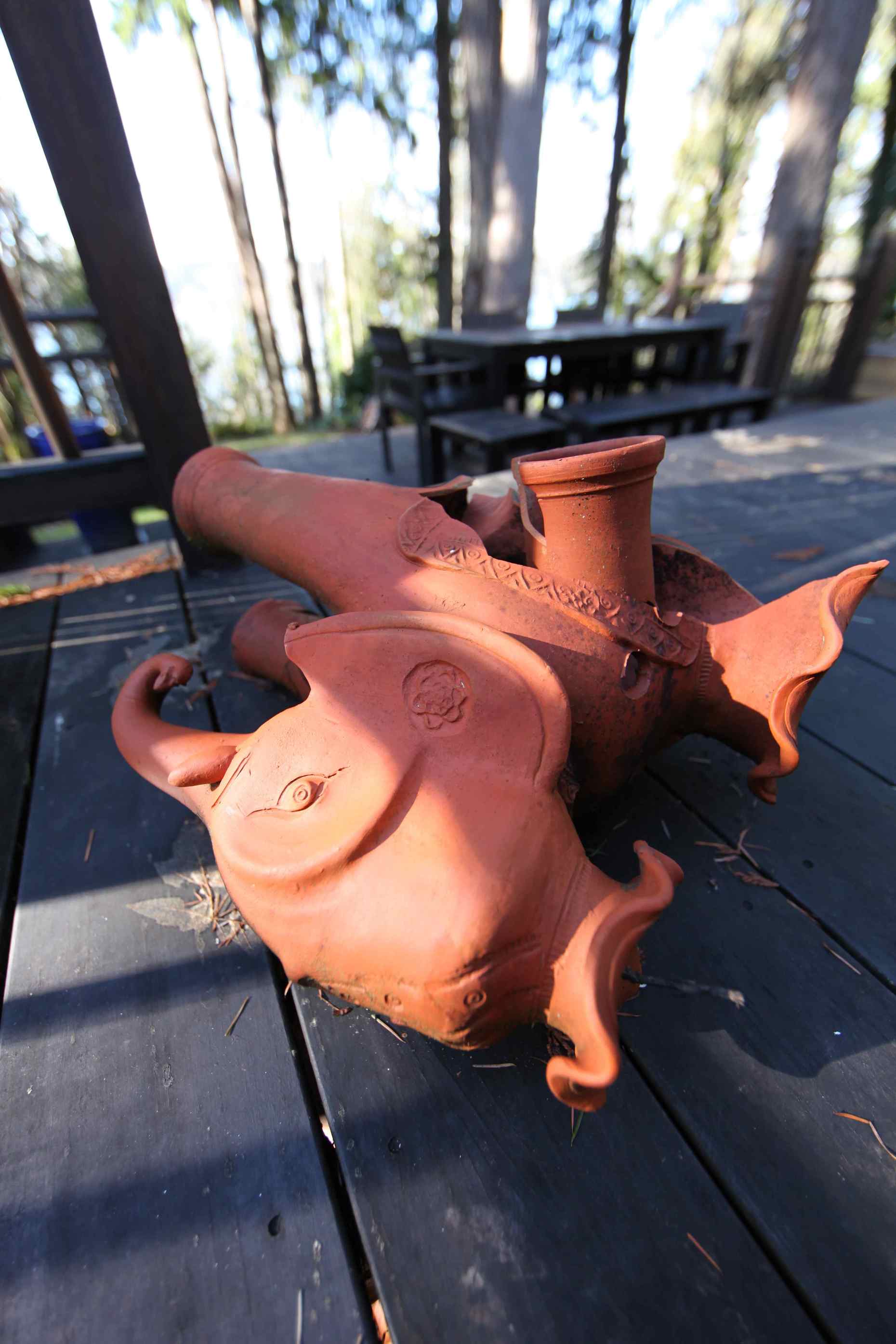
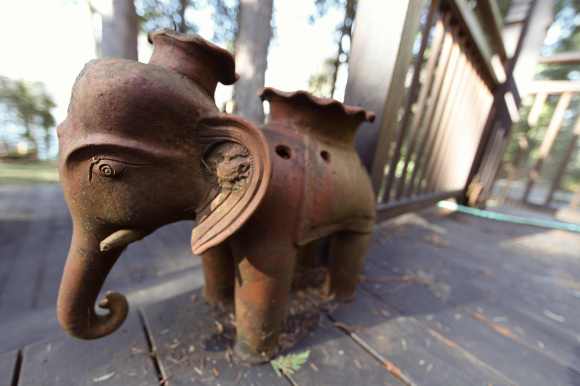
I’m losing patience with our whiskered she-devil.

And now I have a new waste stream to deal with: Broken terra cotta pots.
What to do? A couple days of research yielded some decent options:
Drainage: Break up your pots and use as drainage under eaves of your house to encourage draining the rainwater away from the house. You can also break up the pieces to use as drainage in the bottom of large pots. The terra cotta actually absorbs a good amount of water, aiding in the drainage process wicking water away from the source but also absorbing some for plants above if they’re deep inside a pot.
Garden Bed Edging: Partially buried pieces of terra cotta pots can make a nice garden border or edging, or a feature unto itself in your flower bed.

This dragon, on the edge of a broken pot likes to eat dirt.
Plug Up Holes in Your Chicken Yard: Our chicken yard needs some repair, especially in the places where the chickens have dug holes along the fence. We use broken terra cotta pieces to repair these holes to ensure digging raccoons, mink, and rats don’t get in. Yes, I said rats. They crawl through holes they make and then snuggle up in the shredded paper bedding underneath their nest boxes.

Buried Pot Whimsy: Half bury a broken pot and add a plant inside to give off the effect of an overturned pot buried over time with your pretty perennial taking over. It’s a cool effect, especially with succulents. I think I’ll half-bury our elephant so it looks like it’s clawing its way out from the depths of the Earth.
Make a Fairy Garden: Broken pots can be reassembled into a little world for miniatures.
Make Ceramic Mosaic Pieces: Potshards and any broken ceramics, like dishes and mugs, can be the ingredients for lovely mosaics used in garden stepping stones, large pots, or even furniture.
Our local mosaic artist, Gillian Allard, collects her ceramics from yard sales, and large rummage sales like our Rotary Auction. She teaches classes on mosaics, so she’s always looking. In addition to ceramics and tiles, Gillian incorporates broken glass, buttons, jewelry and beads into her mosaics. I plan on giving her a broken mirror (cat did that one, too) that she’ll surely use. So, if you have broken ceramics, do find a local mosaic artist to pass them on to. Or, offer them up on your local Buy Nothing group.

The Zero Waste Institute has in interesting take on ceramics I tend to agree with: They came from the Earth so why not simply return them to earth? They suggest grinding them down to a powder and then reusing that powder to make more ceramics. Makes good sense. We should have community ceramics-grinding mills so we could fully close the loop and make new ceramics from old ones.

These little ceramic deities sit under one of our apple trees.
I think I’ll do that with my old Burmese pot, unless anyone can give me a better reuse. Dust to dust, right? Send it back to the Earth. And perhaps the kids and I can have a little ceremony when we do it, celebrate the passing of a beautiful hand-made pot made from the earth half way around the Earth as we distribute its dust throughout the forest whose rich green could certainly absorb the minerals and clays used in the old pot.

A landscaper friend of ours says we should save some of the ground-up clay for our compost bin and gardens. It’s fine, he says, to add it to our soil, especially the sandy and loamy areas.

But more importantly, we’ll save a few select pieces of our Burmese pot for our sacred tree, as mementos. Sacred tree? Yes, everyone should have a sacred tree on their land.

It’s a tree of your choosing that’s important or sacred to you for any reason. Maybe it’s in a central part of your property, at the heart of your land. Or maybe it’s just a cool-looking tree, with all sorts of nooks and crannies for you and your children to place lovely offerings. Our tree is both central (2 trees, a madrona and a douglas fir, growing from one spot) and cool-looking. Sometimes we light butter lamps at its base at night, but mostly we place ancient salegrams and special broken and found ceramics at the base.
The kids love searching for the ceramics throughout the seasons to see how the tree is enveloping into its mass the special deities we’ve planted there.


Not too long ago, ceramics were one of the only forms of waste left behind by a community or indeed an entire civilization. My husband, 2 children and I spend a month each year in Nepal filming, exploring remote cliff caves, and searching for the ceramics of an ancient people that were among the first to settle permanently in the Himalaya. Their broken ceramics, tiny shards we find in open fields that would’ve once been their settlements, are the first clue we search for: their trash, among the only remaining evidence of a people long gone. These are undiscovered cultures that thrived in the Himalaya 3,000 years ago, and all that remains are their ceramics, their metal implements, gold and silver funerary masks, their glass and stone beads, wooden coffins, silk, and their bones. That’s it! And their funerary pots, made of a dark clay, are stunning.

3000 year old ceramic pots found in the caves of Mustang. Photo © Liesl Clark

In Kathmandu, you can still buy yogurt in clay pots. It’s beautiful and delicious yogurt, made and sold in disposable ceramic pots. The idea is that the clays are from the valley, so you can simply dispose of the pots outside your door (which many people do) or with your organics in the compost. I think at one time the pots were reused. These beautiful ceramic pots sure beat plastic. We save them and bring many home along with the little terra cotta wax tea lights that cost pennies each. The little pots replace plastic pots in our children’s playhouses.
Now, after dreaming with me in ceramics, imagine our material culture today and what people will find left behind by us earthlings some 3,000 years from now? I’d like to believe that we’ll clean up all the plastics and return one day to a world where we’d simply find sustainably packaged goods, just like we used to do long before plastics ever existed.
Do you have a ceramics reuse? Please share it with us.



